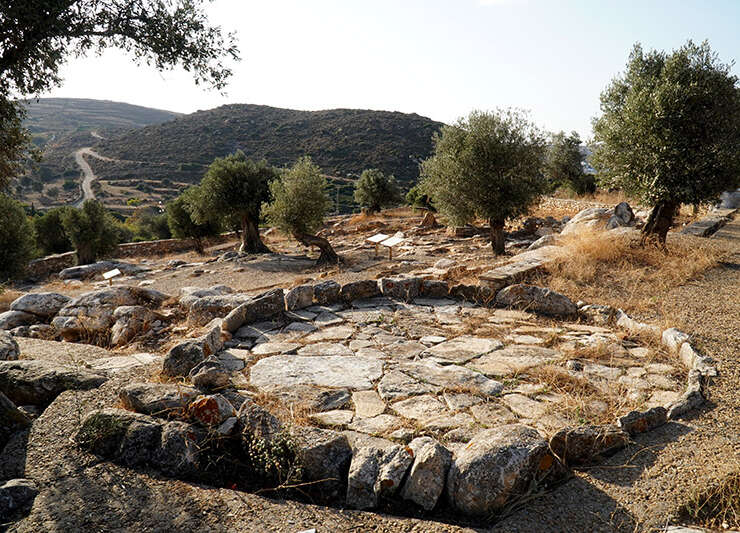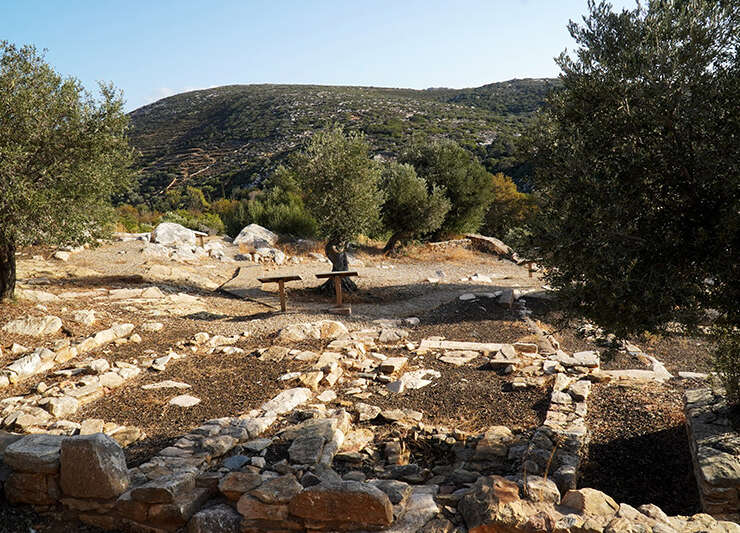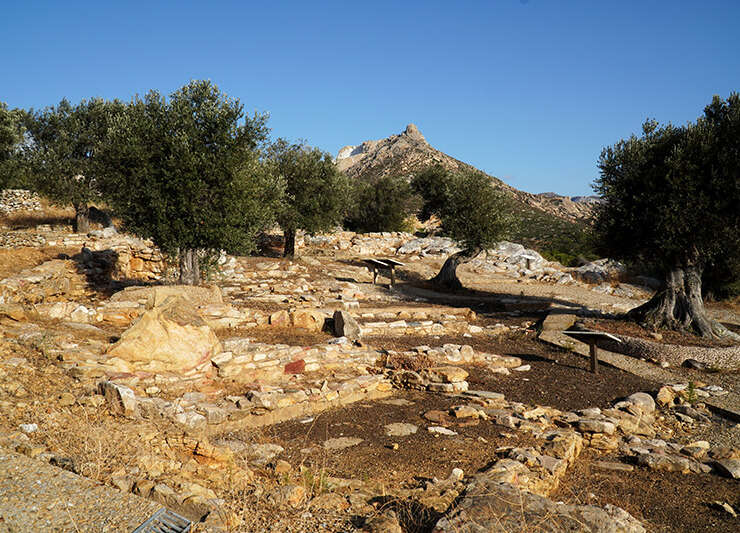The Sanctuary of the Springs
The Sanctuary of the Springs
 Visible ancient remains on the ground near the springs were found in a private olive grove by the architects G. Gruben and M. Korre and in 1997 some of them were discovered by the excavation of the University of Athens.
Visible ancient remains on the ground near the springs were found in a private olive grove by the architects G. Gruben and M. Korre and in 1997 some of them were discovered by the excavation of the University of Athens.
In a private field in Flerio, about 50 meters above the sources of the aqueduct to the northern hills, was discovered in a rocky area, that also preserves traces of quarrying, an important sanctuary of rural type. In 1997 an excavation was carried out at the site, where the building of a small temple was found and that it belonged to a sanctuary that had a cult connection with the springs and the quarries around them. Since 2003, it has been included in the aqueduct and quarry development program and has been thoroughly researched. Few finds from prehistoric times simply testify to the human presence from a very early age in its area. The cult, however, seems to have started in the 8th century BC. A female deity of the euphoria of the earth was housed next to the springs that secured this euphoria in a humble one-room building with a flat roof and walls with random stones and pieces of marble. Shortly after the middle of the 7th century BC a similar building of larger dimensions (4.20 x 7.30m.) was built in contact with the first and hosted the main cult. Around the middle of the 6th century BC, another small building (3.40 x 4.40m) was added to the sacred buildings, now made of worked marble bricks and equipped with a gabled marble roof - a miniature of a monumental temple. It was this, whose remains were partially always visible on the ground. However, in parallel with the deity who controlled the main agricultural occupation of the inhabitants of the area, there are clear indications that in this sanctuary were worshipped two heroes who protected the other, also an important activity in the area, the difficult and dangerous work of the marble quarries. The presence of the quarry in the sanctuary as its main users is documented by the findings in it, unfinished or failed marble works, which seem to have been deposited in the sanctuary by the stone workers.
Source Text: "Preservation and promotion of the ancient aqueduct of Melanos Naxos, an ancient sanctuary at the springs of Melanes and statues in the ancient quarries of the area". Athens 2010.



